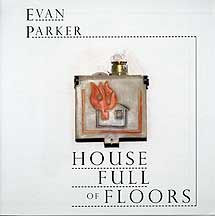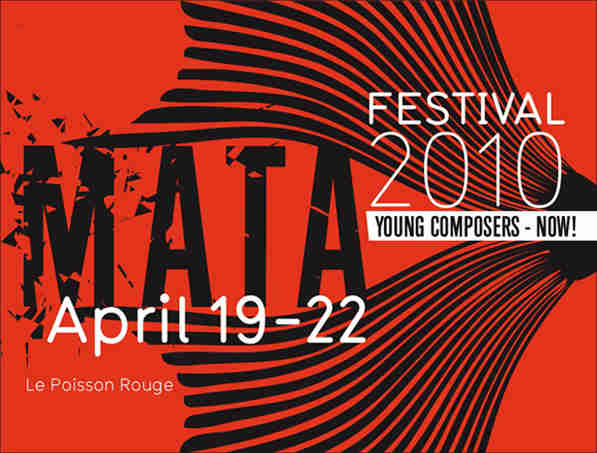
W hat could be the relationship between a viola solo and the destruction of large portions Iraq’s archaeological heritage during the Gulf War? How could a trombone solo possibly relate to the suffering of Iraq’s children as a consequence of past United States’ led United Nations’ economic sanctions imposed on Iraq? What does music have to do with environmental change and the Gobi Desert?”I f you are in New York over the next several days and are interested in having your musical horizons stretched, be sure to sample the offerings in this year’s MATA Festival, whose events are being held at Le Poisson Rouge in Greenwich Village.
— Katia Tiutiunnik, The Symbolic Dimension: An Exploration of the Compositional Process, 2010.
M ATA’s opening last night featured a 2-hour presentation of an interactive sound work ‘Totem for Gobi-New York’ by composer Matt Wright in LPR’s downstairs black-box Gallery Bar with improvisations by renowned U.K. saxophonist Evan Parker. The experience was a poignant period of speculating on the methods and practices of making, experiencing, and thinking about music… imaginative musical meditation about the future of the natural world, faced with the challenges of human population and global development.
T he user is immersed by ‘Gobi’ in a sonic environment with 8 studio monitor speakers overhead plus two large flat-panel video screens that respond to track-pad controller movements with fluid shifts in volume levels and desert imagery. A rhythm pulses continuously, but the intensities of the individual elements (or tracks) are altered by user movement of the track-pads. The participants are able to create their own sonic arrangement of the parts, altering the musical environment with which other participants then interact. The work is a fluid and immersive environment with us users becoming less conscious of ourselves engineering a mix of sounds and more conscious of a constructed environment, experienced sonically, that we symbolically manipulate.
T here is powerful political irony in having ‘Totem-Gobi’ installed in a bar setting, as opposed to, say, a museum. In the bar, the human participants are interacting with the controls in a playful, cavalier, irreverent way, characteristic of routine ‘cocktail behavior’ and oblivious to what they have just done to the music by touching the track-pad in the way that they did. By contrast, in a museum or other setting with reverent behavioral customs the ‘Totem-Gobi’ participants may tend to interact in a manner that is attentive to cause-and-effect, the moral consequences of their actions. How poetically fitting this is. Humankind: most of us oblivious to our environmental impacts—on the Gobi, and on the Earth as a whole.
1) Generate a population of motifs and sound envelopes;
2) Construct timbre model;
3) Evaluate fitness of population members based on an example sound or set of sounds;
4) Select ‘parent’ motifs and pairs of population members to ‘crossover’ their genotypes;
5) Perform ‘crossover’ using genetic algorithm;
6) Perform mutation of motifs;
7) Evaluate the ‘fitness’ of resulting mutants based on an example sound or set of sounds;
8) Survivors’ and replace the current population with new one;
9) Check if the termination condition is satisfied; if not, go back to step 3, otherwise stop the algorithm.
T he algorithm starts by generating a population of candidate sounds. These are weighted samples such as sine wave, square wave, noises, fractals, etc. The timbre model is constructed using a [Kohonen?] neural network. This is an unsupervised machine learning algorithm that self-organizes into a ‘feature map’. In the construction phase of the timbre model the neural network is trained with the initial population and the example sound. The neural network self-organizes into a feature map of sound spectra under the influence of audience-participants’ interactions with the two computer track-pads—one on either end of the LPR’s darkened Gallery Bar.
I s there any difference between improvisation and composition? If so, maybe it has to do with notation. If notated scores create a written literature of music, then improvised compositions create an oral literature of music. But most improvisation involves some degree of notation, at least in principle. And most notated music involves some degree of improvisation... Maybe it has to do with speed. Improvisation happens in the moment, while composition can take a very long time. But if improvisation is spontaneous composition, and composition is a kind of deliberated improvisation, then again it’s just a matter of degree...”T uesday evening’s MATA program at LPR will include works by Christopher McIntyre, Antye Greie, and Bjørn Erik Haugen, Lisa Coons’s ‘Cythère’ (a musical ‘trauma ballet’ ?!), Fabian Svensson’s ‘Singing and Dancing’, Daniel Wohl’s ‘Glitch’, and a world premiere by Nathan Davis, co-commissioned by MATA and Carlsbad Music Festival, performed by Calder String Quartet. Cool.
— John Luther Adams, NewMusicBox, 2001.
B y the way, you might like to have a look at the recent book on symbolic and evolutionary music, by Eduardo Miranda (Professor in Computer Music at the University of Plymouth and Edgard Varèse Guest Professor of Computer Music at the Technical University of Berlin) and Al Biles (Professor of Information Technology at the Rochester Institute of Technology) [link below].


P arker’s inventions stick in the ears like fish hooks.”
— Scott Hacker, Cadence, 1994.
- MATA Festival website
- Le Poisson Rouge website
- Evan Parker page at Univ Sheffield
- Calder Quartet website
- Eiben A, Smith J. Introduction to Evolutionary Computing. Springer, 2010.
- Jankowski M, Kuska J. Connected components labeling: Algorithms in Mathematica, Java, C++ and C#. New Ideas in Symbolic Computation: Proc 6th Intl Mathematica Symposium, 2004.
- Levitin D. This Is Your Brain on Music: The Science of a Human Obsession. Plume, 2007.
- Miranda E, Bils J, eds. Evolutionary Computer Music. Springer, 2007.
- Sacks O. Musicophilia: Tales of Music and the Brain. Vintage, 2008.
- Sivanandam S, Deepa S. An Introduction to Genetic Algorithms. Springer, 2009.
- Tiutiunnik K. The Symbolic Dimension: An Exploration of the Compositional Process. Alpha, 2010.
- Wooten V. The Music Lesson: A Spiritual Search for Growth Through Music. Berkley, 2008.
- Ystad S, et al., eds. Computer Music Modeling and Retrieval. Genesis of Meaning in Sound and Music: 5th International Symposium, CMMR 2008 Copenhagen. Springer, 2009.
- Zorn J, ed. Arcana II: Musicians on Music. Tzadik, 2007.

No comments:
Post a Comment